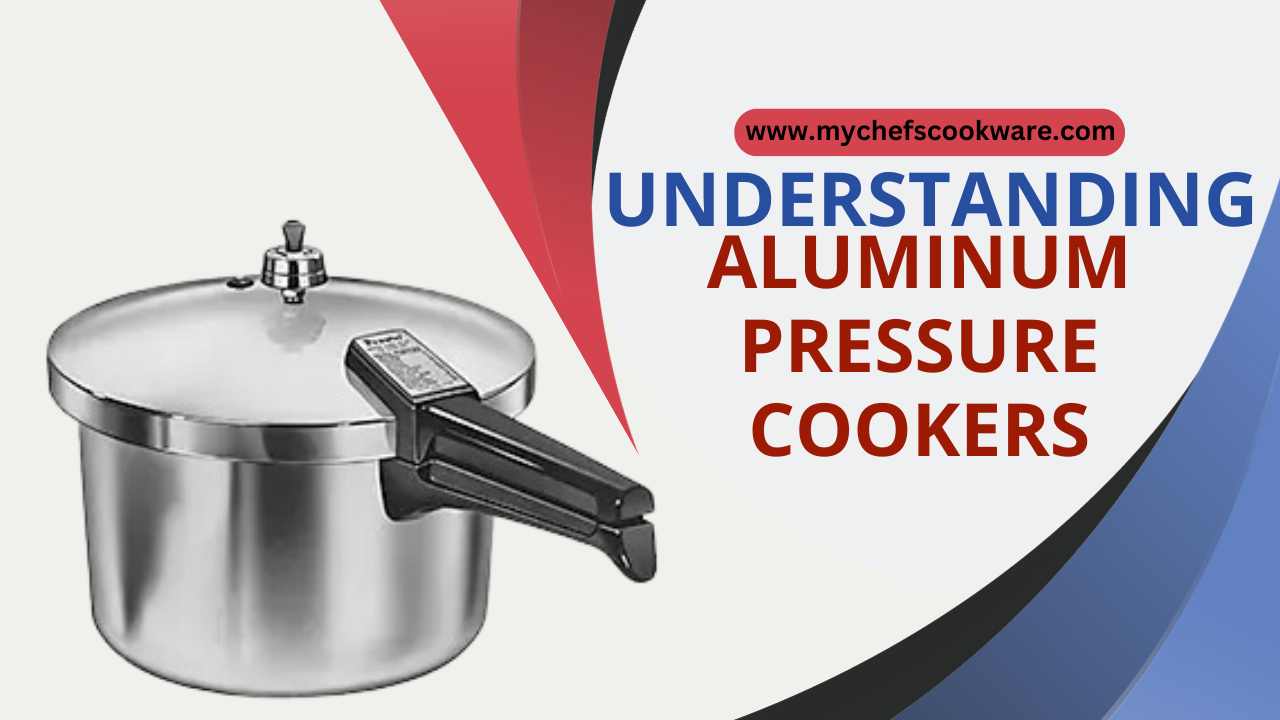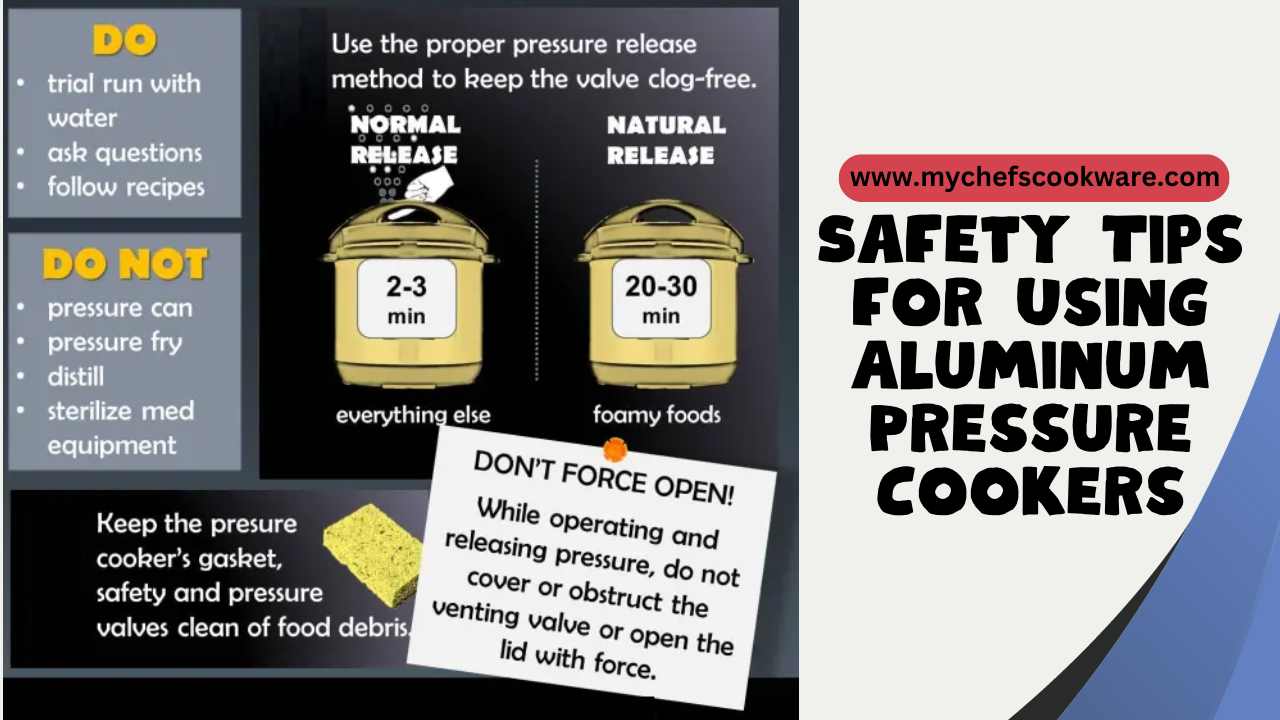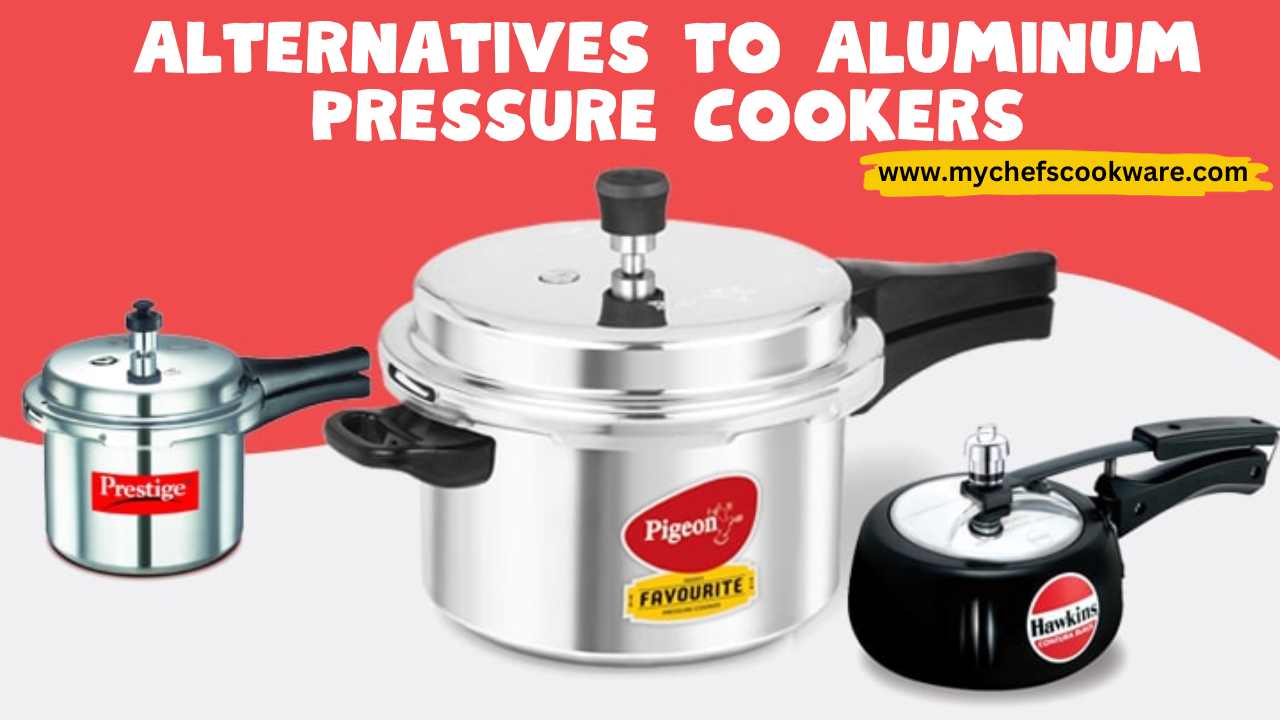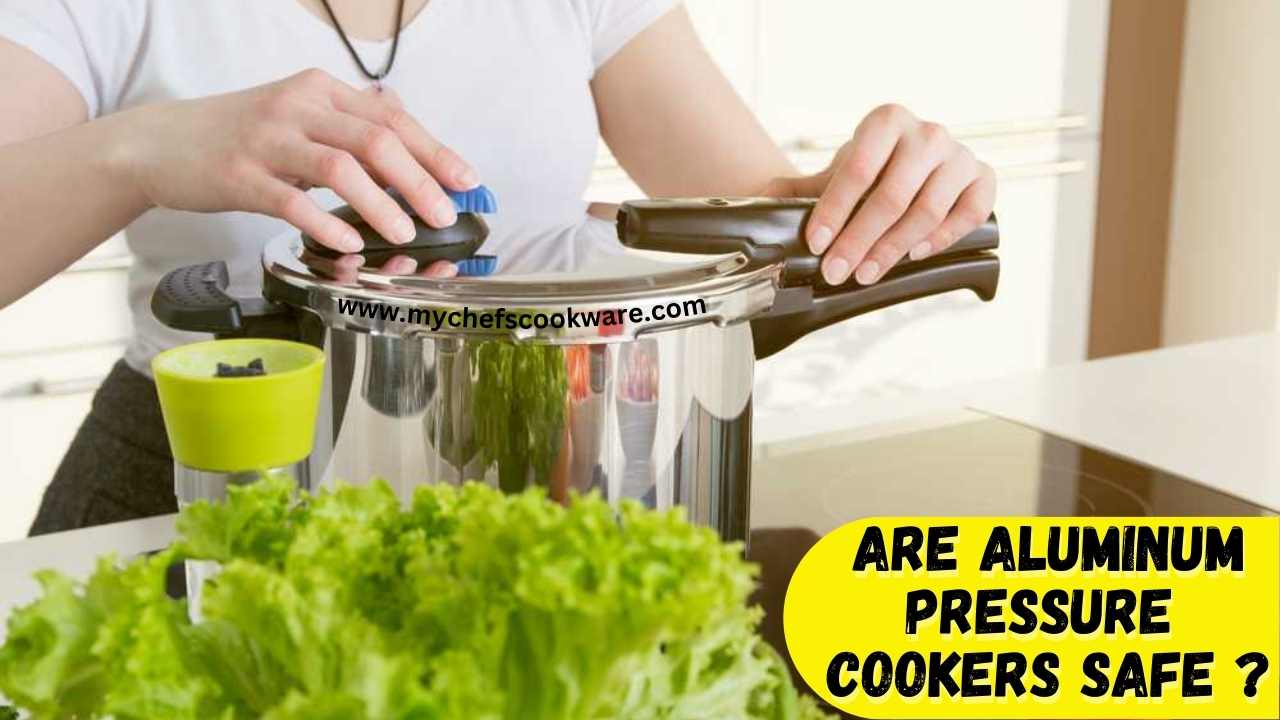In the world of modern cooking, pressure cookers have emerged as indispensable kitchen companions, promising efficiency and convenience in our fast-paced lives. Among the various materials used for crafting these culinary vessels, aluminum is a popular choice due to its affordability and lightweight properties. But the pressing question remains: Are Aluminum Pressure Cookers Safe? The answer, in short, is both yes and no.
In this comprehensive exploration, we will delve into the world of aluminum pressure cookers, examining their advantages, potential health concerns, and safety tips to help you make an informed decision when it comes to your cookware choices. Join us as we unravel the debate surrounding aluminum pressure cookers and provide valuable insights into their safe usage and alternatives.
Understanding Aluminum Pressure Cookers

When it comes to the world of culinary convenience, aluminum pressure cookers have secured their place as essential kitchen tools. But what exactly are aluminum pressure cookers, and what makes them so popular?
- What Are Aluminum Pressure Cookers? At their core, aluminum pressure cookers are a type of cookware designed to cook food quickly and efficiently under pressure. They are known for their ability to significantly reduce cooking times, making them a favorite among busy cooks.
- Common Features of Aluminum Pressure Cookers These kitchen appliances come equipped with a range of features that enhance their functionality. Safety valves, locking mechanisms, and ergonomic handles are common attributes that make them user-friendly.
- Affordability and Lightweight Nature One of the standout qualities of aluminum cookware is its affordability. Aluminum is a budget-friendly choice compared to other materials like stainless steel or copper. Furthermore, its lightweight nature makes it easy to handle in the kitchen.
- Introduction to Safety Concerns While aluminum pressure cookers offer various advantages, they are not without their share of safety concerns. These concerns stem from the properties of aluminum itself, which we will explore in the following section.
Read Also What Happens If You Open a Pressure Cooker Too Soon?
The Safety Debate
The safety debate surrounding aluminum pressure cookers has been a topic of discussion for many years. Aluminum pressure cookers are known for their affordability and excellent heat conductivity, making them a popular choice for many consumers. However, concerns have arisen due to potential health and safety issues associated with cooking in aluminum cookware.
Here are some key points in the safety debate of aluminum pressure cookers:
- Aluminum Leaching: One of the primary concerns is the potential for aluminum to leach into food during cooking. Aluminum is a reactive metal, and when it comes into contact with acidic or alkaline foods, it can react and leach into the food. Some studies have suggested that prolonged exposure to high levels of aluminum may be linked to health problems, such as Alzheimer’s disease and certain types of cancer. However, the extent to which aluminum leaches into food and its health implications are still debated among experts.
- Non-Reactive Coatings: Many aluminum pressure cookers are now equipped with non-reactive coatings, such as anodized aluminum or ceramic coatings. These coatings create a barrier between the food and the aluminum, reducing the risk of aluminum leaching into the food. Cookware with these coatings is generally considered safer from a health perspective.
- Use and Care: Proper use and care of aluminum pressure cookers can minimize potential health risks. Avoid cooking highly acidic foods for extended periods in aluminum cookware, as this can increase the likelihood of aluminum leaching. Regularly inspect the cookware for scratches or damage to the protective coating, as damage can expose the aluminum underneath.
- Food Safety: Regardless of the type of cookware used, following food safety guidelines is crucial. Ensure that food is cooked to the appropriate temperature to kill harmful bacteria and pathogens. Proper cleaning and maintenance of the pressure cooker are also essential to prevent foodborne illnesses.
- Alternatives: For those who are concerned about the potential health risks of aluminum, there are alternative materials available for pressure cookers, such as stainless steel and certain types of nonstick coatings. These materials are generally considered safe and do not have the same concerns regarding aluminum leaching.
- Regulatory Standards: In many countries, cookware, including pressure cookers, is subject to regulatory standards and testing to ensure that it meets safety requirements. Consumers can look for cookware that complies with these standards to help ensure its safety.
Safety Tips for Using Aluminum Pressure Cookers

Using an aluminum pressure cooker safely is essential to prevent accidents and ensure that your cooking experience is trouble-free. Here are some safety tips to keep in mind when using an aluminum pressure cooker:
- Read the Manual: Always start by reading the instruction manual that comes with your aluminum pressure cooker. Different models may have specific usage and safety guidelines that you need to follow.
- Inspect the Pressure Cooker: Before each use, inspect the pressure cooker for any signs of damage or wear, including cracks, dents, or loose parts. Damaged pressure cookers can be dangerous and should not be used.
- Proper Assembly: Ensure that you assemble the pressure cooker correctly, including attaching the lid securely and aligning the pressure valve properly. A well-assembled pressure cooker is crucial for maintaining pressure and safety.
- Use the Right Amount of Liquid: Most pressure cookers require a minimum amount of liquid to generate steam and build pressure safely. Consult your cooker’s manual for specific guidelines on the minimum liquid requirement.
- Avoid Overfilling: Do not overfill the pressure cooker. Leave enough space for the food to expand and for steam to build up. Overfilling can lead to clogs, excessive pressure, and potential safety hazards.
- Use the Right Heat Source: Match the heat source to the size of the pressure cooker. Ensure that the burner or heating element is of an appropriate size and placed centrally under the cooker to distribute heat evenly.
- Control the Heat: Once the pressure cooker reaches the desired pressure, reduce the heat to maintain it. Avoid excessive heat, as it can cause the cooker to operate at dangerously high pressures.
- Stay Attentive: Do not leave a pressure cooker unattended while it’s in use. Keep an eye on it to monitor the pressure and cooking progress. Be prepared to make adjustments if necessary.
- Release Pressure Safely: After cooking, follow the recommended procedure for releasing pressure. This typically involves turning off the heat and allowing the pressure to release naturally or using the quick-release valve if your cooker has one. Always use caution when releasing pressure, as the steam can be very hot.
- Wait for Safety Locks: Some pressure cookers have safety locks that prevent you from opening the lid until the pressure has fully dissipated. Do not attempt to force open the lid before it is safe to do so.
- Avoid Blocking Vent and Valve: Ensure that the vent pipe and pressure release valve are clear and not obstructed by food particles or residue. Blockages can lead to pressure build-up and potentially dangerous situations.
- Use Appropriate Utensils: When handling the pressure cooker and its contents, use oven mitts or heat-resistant gloves to protect your hands from burns.
- Regular Maintenance: Clean your pressure cooker thoroughly after each use, paying special attention to the pressure release valve and gasket. Check the gasket for signs of wear or damage and replace it as needed.
Section 5: Alternatives to Aluminum Pressure Cookers

Pressure cookers are a kitchen essential, but the choice of material can significantly impact your cooking experience and safety. While aluminum pressure cookers have advantages, some prefer stainless steel or ceramic alternatives. This section’ll explore these alternative materials, weigh their pros and cons, and recommend some reputable brands and models for safer pressure cooking.
Introducing Alternative Materials for Pressure Cookers
- Stainless Steel: Stainless steel pressure cookers are a popular alternative to aluminum. They are known for their durability and resistance to staining and corrosion. Stainless steel is also non-reactive, which means it won’t interact with acidic ingredients, preserving the flavor of your dishes.
- Ceramic: Ceramic-coated pressure cookers offer a non-stick cooking surface without the potential health concerns associated with traditional non-stick coatings. They are easy to clean and maintain, making them an attractive option for health-conscious cooks.
The Advantages and Disadvantages of These Alternatives
Stainless Steel: Advantages:
- Durability and longevity
- Non-reactive with acidic foods
- Easy to clean and maintain
Disadvantages:
- Slower heat conduction compared to aluminum
Ceramic: Advantages:
- Non-stick cooking surface
- Easy to clean
- No health concerns associated with traditional non-stick coatings
Disadvantages:
- Delicate and may chip or crack if mishandled
Some Reputable Brands or Models for Safer Pressure Cooking
Stainless Steel:
- Instant Pot Duo Nova: This popular electric pressure cooker comes in a stainless steel variant known for its durability and safety features.
- Fissler Vitaquick Pressure Cooker: Fissler is renowned for its high-quality stainless steel cookware, and its pressure cookers are no exception.
- All-Clad Stainless Steel Pressure Cooker: All-Clad’s reputation for excellence extends to their stainless steel pressure cookers, known for even heating and durability.
Ceramic-Coated:
- T-fal P45007 Clipso Ceramic Pressure Cooker: T-fal offers a ceramic-coated pressure cooker known for its non-stick properties and ease of use.
- Breville Fast Slow Pro: Breville’s ceramic-coated pressure cooker combines versatility with a non-stick cooking surface for easy clean-up.
- Zavor LUX LCD: Zavor’s ceramic-coated pressure cooker is favored for its safety features and user-friendly design.
Conclusion: Are Aluminum Pressure Cookers Safe
The material you choose is of utmost importance in pressure cooking, particularly when we ask, “Are Aluminum Pressure Cookers Safe?“
Throughout our exploration, we’ve carefully weighed the pros and cons of alternative materials like stainless steel and ceramic. Stainless steel impresses with its durability and non-reactive properties, making it a favored option for many cooks. Conversely, ceramic-coated pressure cookers offer a non-stick cooking surface while avoiding the concerns linked to traditional non-stick coatings.
As you venture into the world of pressure cooking, it becomes essential to consider your cooking requirements and preferences and the safety and performance factors associated with your chosen cookware. Recognized brands and models prioritize these aspects, ensuring you can savor the advantages of pressure cooking without compromising your safety.
Ultimately, the query “Are Aluminum Pressure Cookers Safe?” broadens our understanding of making informed decisions in the kitchen. Whether you decide on aluminum, stainless steel, or ceramic, the critical element is comprehending the materials, their benefits, and any potential drawbacks they may pose. Equipped with this knowledge, you can embark on a secure and gratifying pressure cooking journey, knowing that your choice of cookware aligns with your culinary needs.

